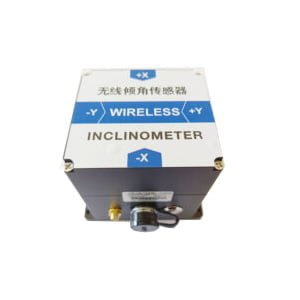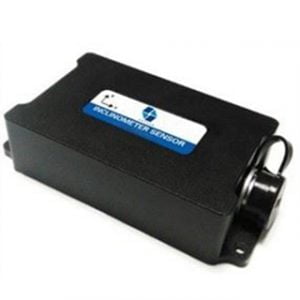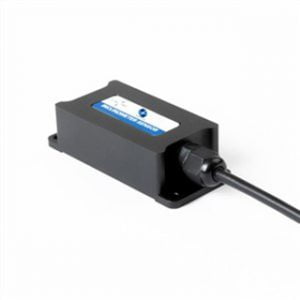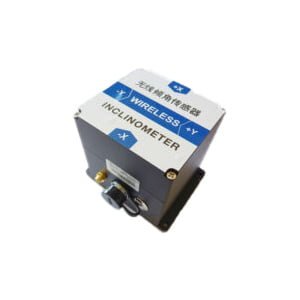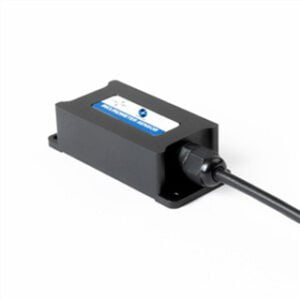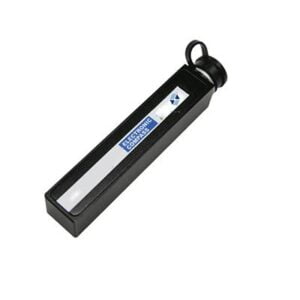What are the types of tilt sensors
Classified by data transmission mode
Tilt sensors can be divided into wired tilt sensors and wireless tilt sensors according to the way of data transmission.
1. Wired inclination sensor: It usually uses RS485 bus or other similar bus protocols to transmit inclination signals. RS485 is a serial communication protocol widely used in the field of industrial automation, which has the advantages of noise suppression and high signal quality. The main advantage of the wired inclination sensor is that the signal stability is high, and the signal quality is not easy to be disturbed because of the wired transmission mode. In addition, wired sensors have a long service life, lower maintenance costs, and a lower failure rate. However, this sensor also has some disadvantages, such as the need to lay cables, high requirements for the field environment, may exist in some application scenarios wiring difficulties. The wired inclination sensor can be widely used in buildings, bridges, DAMS, shield pipe jacking, rail transit, high-rise buildings, slope monitoring and other scenarios.

2. Wireless inclination sensor: Common wireless inclination sensor include NB-IoT wireless inclination sensor and LORO wireless inclinometer sensor. These sensors transmit tilt signals via wireless communication technology without cable connections, making them highly flexible. The main advantages of wireless tilt sensors are their flexibility and convenience. Since no wiring is required, the sensor can be easily installed anywhere it is needed, without considering the laying of cables. In addition, wireless sensors also have the advantages of high mobility, easy expansion and maintenance. What is wireless transmission, for example, ER-TS-12200-Modbus is a wireless inclination sensor, it does not need to use traditional cables to transmit inclination signals, but uses lithium battery power supply, through Bluetooth and ZigBee wireless transmission of inclination data. This wireless digital signal transmission method eliminates the tedious wiring and noise interference caused by long cable transmission. However, wireless sensors also have some disadvantages, such as signal quality may be affected by radio interference, and signal stability and reliability may not be as good as wired sensors. Wireless tilt sensor can be widely used in bridge buildings, transmission tower/signal tower tilt, dangerous buildings, ancient buildings, warehouse shelves, smart town, smart lighthouse, fan tower tilt monitoring and other scenes.
Classification by working principle
According to different working principles, inclination sensor can be divided into static inclinometer sensor and dynamic inclinometer sensor.
1. Static tilt sensor: It is mainly used to measure the static tilt angle of objects, such as the tilt monitoring of Bridges, dangerous houses, power towers and other structures. ER-TS-3160VO is a static inclinometer sensor, which can measure the tilt angle of the object in the static state, and can be used to check the tilt angle of bridges, DAMS, and monitor the angle of various construction machinery. It has the characteristics of small size, strong impact and vibration resistance.
2. Dynamic inclinometer sensor: It is suitable for measuring the tilt angle of an object in a dynamic environment, such as dynamic balance control in the aerospace and automotive industries.
Classification by measuring range
According to the different measurement range, inclinometer sensor can be divided into single axis, double axis and three axis inclinometer sensors. A single-axis tilt sensor can only measure the tilt angle of an object on one plane, a two-axis inclinometer sensor can simultaneously measure the tilt angle of an object on two planes, and a three-axis inclination sensor can simultaneously measure the tilt angle of three dimensions.
Inclination sensor selection
When selecting an inclinometer sensor, factors such as measurement range, accuracy, power supply mode, networking mode, working environment and cost need to be considered. First, the measurement range of the sensor is determined according to the measurement range. If you need to measure a large range of tilt angles, you can choose a sensor with a large measurement range. Secondly, it is necessary to consider the accuracy of the sensor, that is, the accuracy of the sensor output data. High-precision tilt sensors can provide more accurate tilt angle data. In addition, to choose the output mode that suits your needs, the output of the sensor can be analog or digital signal. Choose the appropriate output method according to your needs. In addition, it is also necessary to consider the working environment of the sensor, such as temperature, humidity, etc., and choose a sensor that can adapt to the working environment. Finally, the cost of the sensor is determined according to the budget, and the inclination sensor with higher cost performance is selected.
More Technical Questions
1.What can a Tilt Sensor be Used for?
2.Is a Tilt Sensor the Same as as an Accelerometer?
3.The Difference between Tilt Sensor and Gyro Sensor
5.What are Tilt Switches and Tilt Sensors?
6.How to Use the Tilt Sensor and How to Install It?
Products in Article
